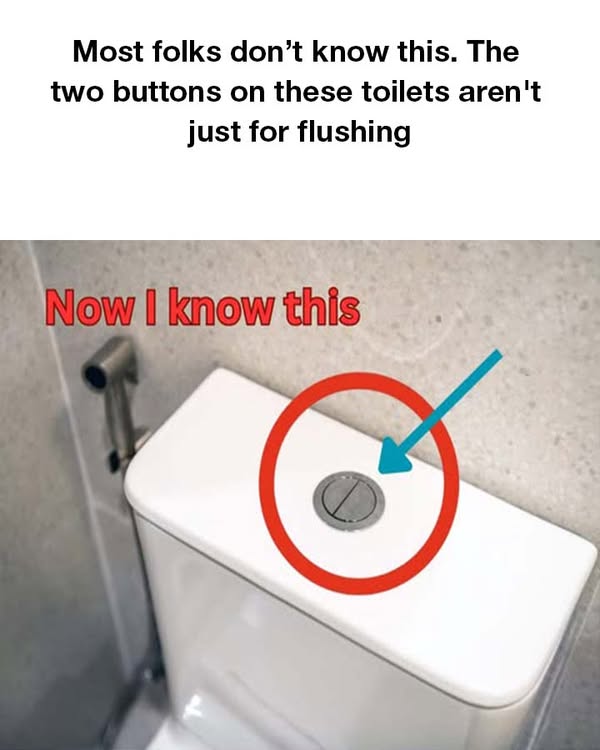
Many people still think the two buttons on modern toilets are just for flushing. But there’s more to them!
The Concept of Dual Flush
Modern dual-flush toilets have two levers or buttons of different sizes. Each is connected to its own exit valve. The larger one and the smaller one serve different purposes.
Water Conservation
The larger lever releases about 6 to 9 liters of water, used for flushing solid waste. The smaller lever releases around 3 to 4.5 liters of water, for flushing liquid waste. This design helps save water.
How Much Water Can You Save?
Calculations show that a household using dual-flush toilets can save up to 20,000 liters of water a year compared to single-flush toilets. Although dual-flush toilets may cost a bit more to install, they are environmentally friendly and can reduce water bills.
The Origin and Implementation
The idea of dual flush was created by American industrial designer Victor Papanek and proposed in his 1976 book ‘Design for the Real World’. It was first put into use in Australia in 1980.
Use It Wisely
Next time you use the toilet, flush according to your need. If you’ve just urinated, use the smaller lever, which may be smaller in size or have a symbol like a half circle, a small circle, or a small raindrop. When you’ve had a bowel movement, press the larger lever, which is usually bigger or has visual signs.